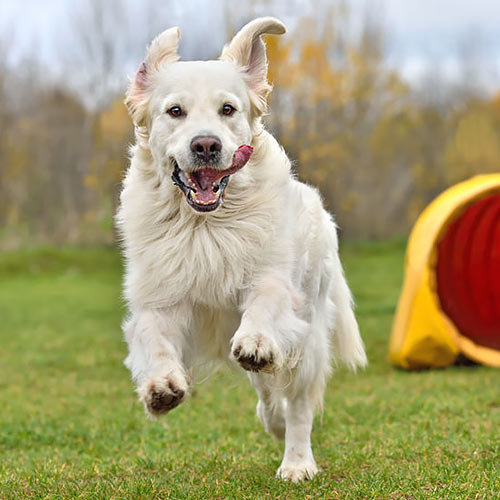There is a lot of rhetoric out there about balanced dog trainers. For those who are willing to learn, let us try to help sort through the malaise.
First, it may be best to briefly discuss a noisy minority faction within dog training. These trainers swear that positive reinforcement, with no forms of correction, is the only way to train dogs. To tell a dog “no” will hurt his feelings. Corrective collars are mean, nasty, barbaric dog-killers. These misaligned individuals would rather have a dog euthanized even though there are corrective measures available that would fix the problem and save the dog’s life. We won’t take the time to refute this grisly fallacy (scientifically, it IS a fallacy). There is no sense in arguing with this arrogant, grumpy crowd because you can’t fix…well, you know.
We have had many clients across the years who come to us after first going to a so-called “positive only” trainer. The dog still isn’t obedient, is an unpleasant member of the household, and is unruly. Now – let’s be clear – this isn’t the fault of positive reinforcement; it’s the fault of the trainer for not being balanced. These same dogs graduate from our balanced training programs with amazing results. Many of our clients can hardly believe the transformation that their dog has made after a few weeks of training!
While we wholeheartedly endorse positive reinforcement, balanced dog training also uses mild forms of correction. Science teaches us that dogs generally respond best to rewards and corrections. After all, this is how dogs interact with each other. When a dog misbehaves in a pack, whether it’s 12 wolves in a Minnesota forest or two shih tzus in the living room, the leader/s corrects the offender. This could be a nip, a bite, a look, a growl, etc. Now, some trainers advocate that a dog in a human household is no longer a pack animal. (sigh) It’s as though the dog’s DNA is magically changed once it crosses the threshold of the house. (just…wow!..smh)
We use A LOT of rewards in training. This can be in the form of treats, petting, praise, a scratch behind the ears, throwing a tennis ball, etc. Clear communication with the dog involves rewarding them for what they do well. For example, my own narcotics detection dog, Dara, gets enthusiastically rewarded by me, her handler, as much on the 1000th successful find as though it was her first. But if she gets distracted by dog pee on a tree nearby, she also gets a verbal correction from me. This gets her refocused on the job at hand. After the sniff is complete, then she can go back to the tree if she wants ????

Many people misunderstand corrections. To these individuals, corrections mean pain. For the educated, experienced trainer, this is not the case at all. Good corrections are not to be given in anger, not to be overdone, and are to be as minimal as possible; a look, a word, for example.
Even a prong collar, as mean as it looks, is scientifically designed to speak a dog’s language, by mimicking another dog’s nip – nature’s way of correcting a dog. The goal of using the prong is for it to be a short-term solution. Those who decry the prong, say that it is a tool that causes pain… you know, it looks mean therefore it has to BE mean. The science behind the prong uses pressure – not pain – to correct a dog’s unwanted behavior. Oh, if a trainer says the prong collar chokes the dog…walk away (sigh). By the way, it is almost impossible to hurt a dog with a prong collar, in spite of how mean it looks. In fact, most dogs that have a trainer/owner who use the prong correctly are more confident (because we’re speaking a language they understand) and certainly more behaved.
A word to the wise… If a trainer is against using a Remote Trainer (or electronic collar) because it’s a cruel form of punishment, go elsewhere. Their whole premise is skewed. Correctly-used Remotes are not corrections anyway, in the first place. And the levels used are so low that most humans cannot feel it. But that’s for another article. We use a balanced approach because it works. Using reward-based training with correctly-placed, timely corrections speaks very clearly to the dog. She is able to act accordingly because we have taken the time to explain the rules, wisely enforce the rules, and all are on the same page. In short, balanced training helps to produce balanced dogs.

